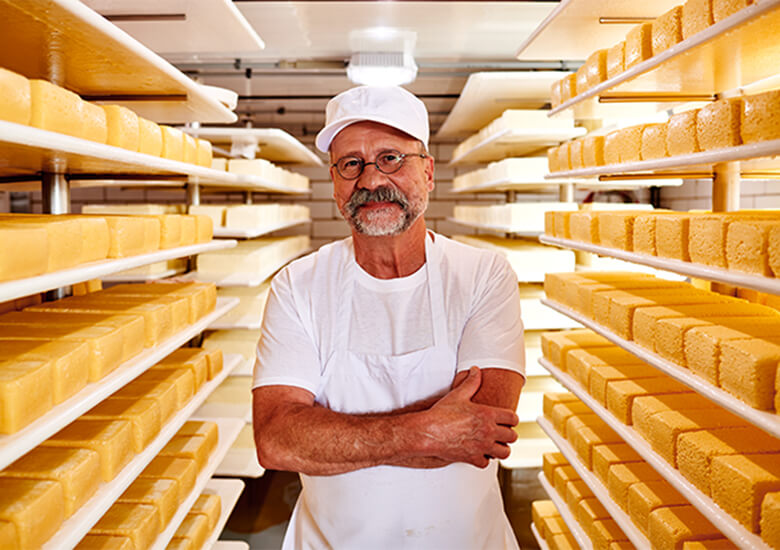Why Floridia Cheese Thomastown Is a Treasure in Melbourne Made Cheese
Why Floridia Cheese Thomastown Is a Treasure in Melbourne Made Cheese
Blog Article
Unlocking the Tricks of Artisanal Cheese Making: A Detailed DIY Guide
In the world of culinary craftsmanship, artisanal cheese making stands as a testimony to the delicate equilibrium in between practice and development. Each action in the process, from picking the appropriate milk to developing aging strategies, holds within it a riches of understanding gave with generations. As we get started on this trip to debunk the art of developing elegant cheeses, we are confronted with a tapestry of secrets and skills waiting to be deciphered. Join us as we check out the ins and outs of this old craft, where patience, art, and scientific research merge to create tastes that entice the senses.
Choosing the Right Milk
When starting the journey of artisanal cheese making, the choice of milk plays a crucial duty in figuring out the high quality and qualities of the final item. The kind of milk chosen impacts the flavor, structure, and overall profile of celebrity. Raw milk, directly from the animal, is favored by lots of artisanal cheesemakers due to its special mix of enzymes, germs, and flavor compounds. Making use of raw milk comes with dangers and policies, making pasteurized milk a safer choice for newbies.
Furthermore, the source of the milk, whether from cows, goats, sheep, or buffalo, adds distinctive tastes and attributes to the cheese. Each type of milk brings its very own subtleties, enabling for a broad variety of cheese selections to be crafted based on the selected milk.
Culturing and Coagulating
To launch the cheese-making procedure, the vital actions of culturing and coagulating must be carefully implemented to transform milk into curds and whey. Culturing involves introducing advantageous bacteria to the milk, which after that starts the fermentation process. These microorganisms transform lactose (milk sugar) into lactic acid, creating the acidic setting needed for coagulation. The kind of society made use of can significantly influence the taste, appearance, and ripening of the final cheese item.

The timing and temperature control during culturing and coagulation are important aspects that influence the final outcome of the cheese. Correct implementation of these actions is necessary to make sure the wanted structure, flavor, and uniformity of the artisanal cheese being produced.
Draining Pipes and Pressing Curds
After the milk proteins have coagulated and the curds have actually been cut to launch whey, the next critical action in artisanal cheese making involves draining and pushing the curds to accomplish the wanted structure and consistency of the final cheese item. Draining pipes is the procedure of dividing the curds from the whey. This can be done by moving the curds into a cheesecloth-lined bowl-shaped sieve or mold and mildew and permitting the whey to drain off normally. The time for draining can vary depending upon the kind of cheese being made and the wanted moisture material.
When the curds have sufficiently drained, the following action is pushing. Pressing helps get rid of any staying whey and compacts the curds to develop a strong cheese wheel. Pressing can be done utilizing specialized cheese presses that see use constant and gentle stress over a time period. The duration and pressure applied during pushing will influence the final texture of celebrity, from soft and creamy to hard and company. Correct pressing and draining are crucial actions that significantly influence the top quality and qualities of the artisanal cheese being produced.
Aging and Flavor Techniques
Implementing precise aging and flavoring techniques is essential in boosting the depth and intricacy of artisanal cheeses, raising their taste accounts to exquisite levels of refinement and class. Aging plays an essential role in creating the distinct tastes and structures that identify artisanal cheeses. Throughout the aging process, cheeses are stored in carefully managed settings where elements such as moisture, airflow, and temperature level are manipulated to encourage the growth of valuable mold and mildews and microorganisms. This controlled atmosphere permits the cheese to mature gradually, creating abundant tastes and intricate aromas.
Seasoning strategies also contribute dramatically to the last taste of artisanal cheeses. Cheesemakers might choose to introduce additional flavors by integrating components such as herbs, flavors, and even fruits right into the cheese throughout the manufacturing procedure. In addition, some cheeses are cleaned or massaged with numerous fluids, such as brine or alcohol, to improve their textures and tastes.
Covering and Storing Cheeses

Verdict
In conclusion, grasping the art of artisanal cheese making involves thoroughly picking the ideal milk, adhering to precise culturing and coagulating processes, draining pipes and pushing curds successfully, and making use of various aging and flavoring techniques. By adhering to these steps diligently and with attention to detail, you can develop your own scrumptious and unique cheeses in your home. Bear in mind to wrap and keep your cheeses appropriately to make sure optimum taste and appearance advancement. Pleased cheese making!
Each type of milk brings its own subtleties, enabling for a broad variety of cheese selections to be crafted based on the chosen milk.After the milk healthy proteins have coagulated and the curds have actually been reduced to launch whey, the next essential action in artisanal cheese making entails draining pipes and pushing the curds to accomplish the wanted appearance and uniformity of the final cheese product. A lot of cheeses ought to be wrapped in wax paper or cheese paper to allow them to breathe while safeguarding them from drying out. For cheeses that need to continue aging, such as bloomy rinds or cleaned peels, ensure they are kept in an awesome environment like a cheese cavern or a fridge set to the ideal temperature. By paying focus to the wrapping and storage of artisanal cheeses, cheese manufacturers and fanatics can protect the honesty of these specials and completely appreciate their intricate flavors.
Report this page